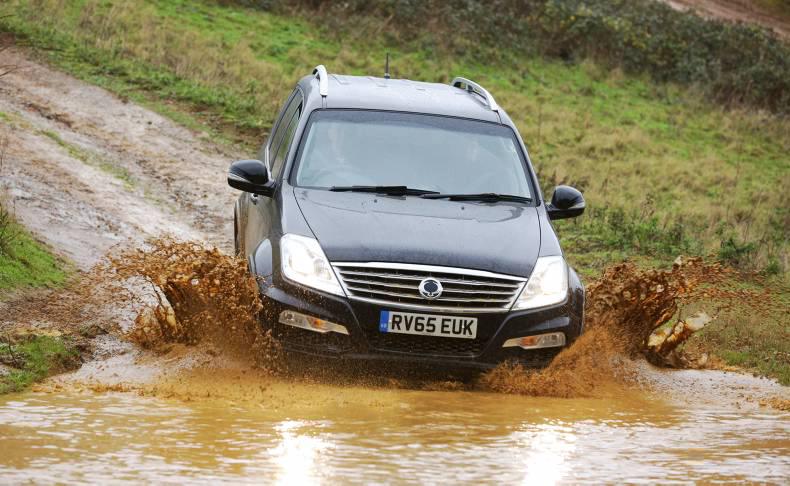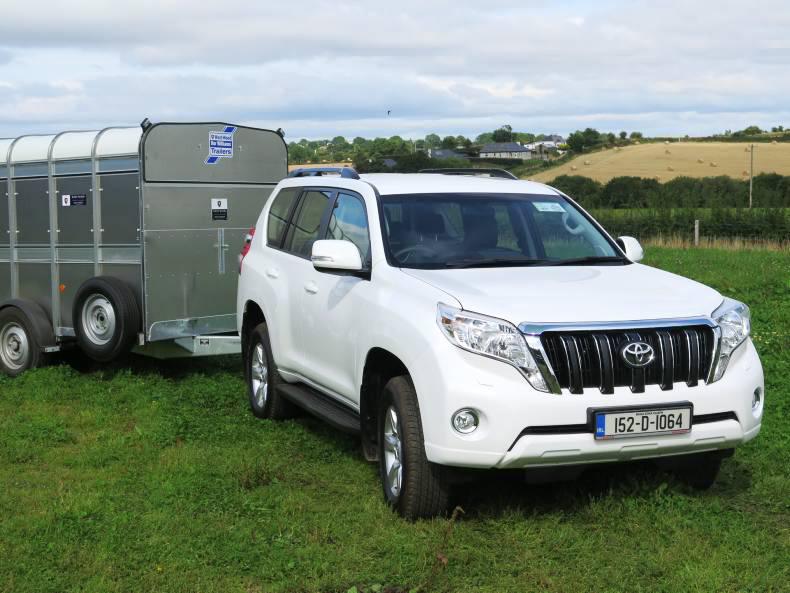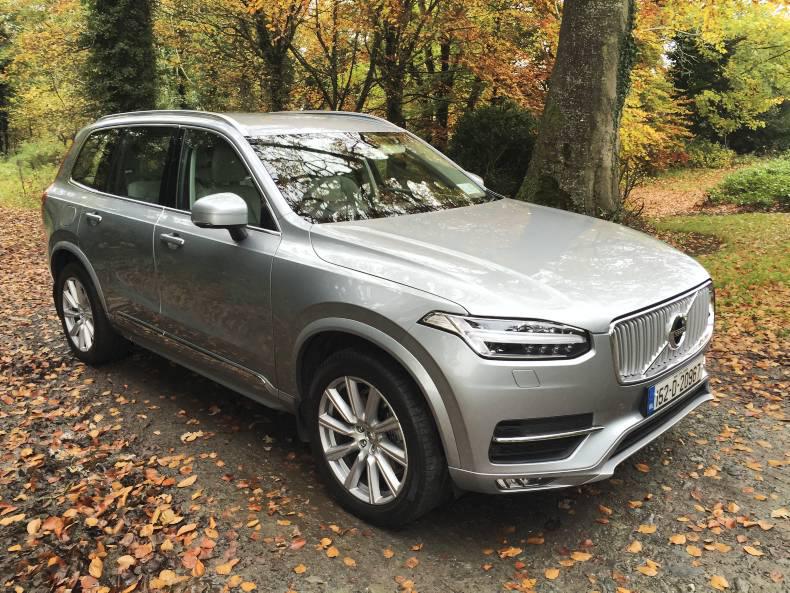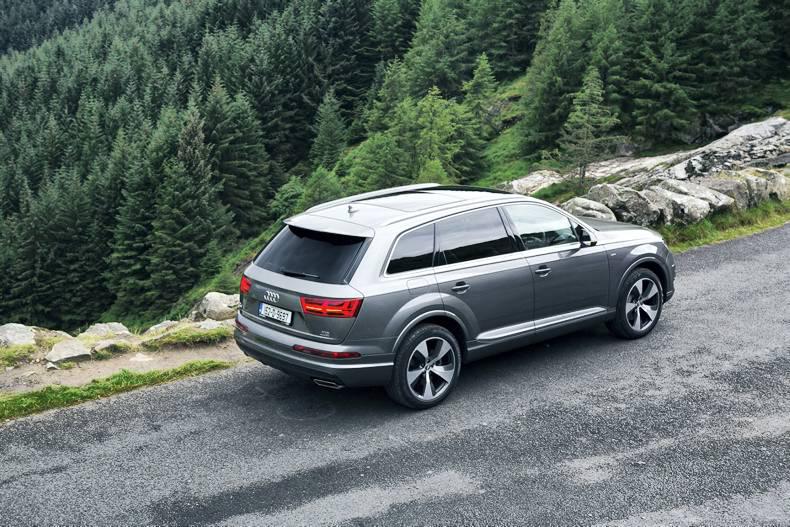There will be a lot on offer in the fast-growing 4x4 and SUV sector, so expect plenty of competition and enough room to do good deals to get the best value.
BMW
BMW is offering a new range of engines and gearboxes for its entry-level X1 SUV. This new model comes with BMW’s efficient version of the xDrive all-wheel-drive system.
There will be one petrol engine and three diesel options offered. The new BMW X1 uses completely new engine and chassis technology, with front/transverse-mounted four-cylinder engines.
BMW claims that the compact, low-weight all-wheel-drive system distributes the engine’s power between the front and rear axle exactly as the situation requires at all times. The BMW range is also at the higher price end of the market.
Dacia
The Dacia Duster range (pictured below) is the bargain-basement end of the SUV market, with the most price-competitive 4x4 on the market. For 2016, Dacia claims that the 2016 Duster is even more affordable to run with the introduction of a new EU6-compliant 1.6-litre, 115bhp petrol engine. This engine is claimed to improve performance, as well as reducing fuel consumption and CO2 emissions. It significantly reduces running costs and improves the towing capacity of 4x2 models.
There are also reductions in fuel consumption and emissions for Duster models powered by the dCi 110 turbo-diesel engine, which now meets EU6 emissions standards. As with the new petrol engine, this has the effect of lowering the VRT band of every model. Engine Stop and Start is standard.
The 115hp 1.6-litre, 16-valve engine is a brand new unit, not simply an EU6 version of the petrol engine previously fitted to the Duster. It develops 10hp more than its predecessor at 5,500rpm and has an extra 8Nm of torque, now 156Nm at 4,000rpm.
This trims the 0-100km/h acceleration time of 4x2 versions from 11.5 to 11.0 seconds, while for 4x4 models the reduction is 0.8 seconds to 12.0 seconds. For 4x4 versions, CO2 emissions tumble by 30g/km to 155g/km, shaving €200 off the annual road tax levels.
Ford
Ford has lots of 4x4 and SUV news for 2016, as well as the new Ranger. Ford will be offering the new Edge SUV later in the year as a larger SUV than the popular Kuga. It will be offered with the option of 180bhp or 210bhp from two-litre turbo-diesel engines.
The new five-seat Edge will be equipped as standard with Ford’s intelligent all-wheel drive, active noise control, pedestrian detection, Ford DAB Audio with SYNC 2 connectivity system, privacy glass and 19in alloy wheels.
The Edge will offer a host of new Ford technologies, including adaptive steering, which automatically optimises the steering response according to vehicle speed, making it easy to manoeuvre at low speeds, while remaining precise and intuitive at higher speeds; and front wide-view camera, which makes restricted visibility junctions or parking spaces easier to negotiate.
Edge will have a pre-collision assist with pedestrian detection system. This is a camera and radar-based system that can operate at speeds from 8km/h to 180km/h to detect vehicles and people in the road ahead. The system can automatically apply the brakes if a potential collision is detected and the driver does not respond to warnings.
Honda
For Honda, the new HR-V compact SUV is the big news for 2016. This is a neat and powerful SUV with a 1.6-litre turbo-diesel engine that’s also been offered in the bigger CR-V.
HR-V entry prices are competitive starting at around €26,000 for what is an impressive compact SUV to drive. The coupé look may be deceiving, when in reality this compact SUV is reasonably spacious.
Hyundai
For 2016, Hyundai in Ireland has re-launched the Tucson name to replace the current iX35 model with a mid-range SUV that’s impressive in its offering. The new model comes with more internal space, giving more headroom and legroom for front and back passengers.
Hyundai will be offering the new Tucson in two- and four-wheel drive, with the petrol model only available in two-wheel drive format. Entry prices are competitive.
Hyundai retains the 1.7-litre turbo-diesel engine in the new Tucson and claims it comes with lower CO2 emission levels as well as enhanced fuel economy. The economy figures claimed are up from 18.8km/l to 21.7km/l, while the CO2 levels drop to 119g/km, putting the new model into car tax group A4, costing just €200 per year.
Jeep
Jeep will be offering a wider range with the arrival of the compact Renegade in 2015. The Jeep range is now powered by Fiat Powertrain diesel engines that deliver significantly better fuel economy than in the past.
The Jeep Cherokee range is now available with a new 2.2-litre turbo-diesel engine, better fuel economy and greater torque. This engine, available in 185bhp or 200bhp power outputs, is claimed to offer a significantly wider spread of torque from low rpm, greater power, improved performance and better fuel economy than the outgoing two-litre 170hp automatic engine. The new 2.2-litre engine is already Euro 6 compliant.
Kia
Kia will be launching the new generation Sportage SUV in Ireland next week. This is the fourth generation of the car and it has a new look with improvements in engines and safety.
Kia claims that the new Sportage comes with a host of advanced new technology features and greater quality.
Land Rover
This year will see the end of the current Land Rover Defender officially but there are reports that Jaguar Land Rover (JLR) could extend its production. The new Defender will have to meet lower emissions and higher safety standards, and it is expected to be available by 2018.
There are rumours about where the next generation Defender will be built, especially after JLR announced that it has signed an agreement with Magna Steyr to build so far unnamed models in Graz, Austria. It could also be built at the new JLR factory in Slovakia.
Mazda
While Mazda is no longer in the heavier 4x4 end of the market, its CX3 and CX5 remain its SUV offerings. There is a new crossover concept on the way from Mazda, which was shown at the 2015 Frankfurt Motor Show, but it’s still a long way from the market.
Mercedes-Benz
Mercedes-Benz has expanded its presence in the SUV market with the introduction of the new GLC model last October. The new model fits into the Mercedes-Benz line-up between the smaller GLA and larger GLE as a mid-size SUV with prices in the region of €45,000.
This new GLC replaces the outgoing GLK, a model that was produced only in left-hand drive. It is based on the latest C-Class platform, but with a longer wheelbase. This new GLC aims to appeal to urban and rural drivers alike. Viewed from the front, it has a short overhang, new striking headlamps, body under-guard, split LED lamps and twin-louvre grille.
Mercedes Benz also launched a new GLE Coupé as a new SUV concept that further expands the Mercedes-Benz range. The new GLE Coupé claims to have a sporty appeal helped by its very all-road/off-road characteristics.
Mitsubishi
The Mitsubishi offer was significantly upgraded in 2015 with the new L200 and changes to the Outlander. The new generation Outlander is more modern looking while being slightly longer than the previous model.
There is a lot of kit on the new Outlander, including reversing camera with parking sensors, rain-sensor lights and dusk-sensor headlights, along with alloy wheels.
Passenger versions come with a class-leading eight-year warranty, while the commercial Outlanders get five-year warranty.
Nissan
Nissan has the new Navara on the way for early new year (see page 10). Nissan’s Qashqai remains the most popular SUV on the Irish market and it’s available as a commercial version too. If you want seven seats in your Nissan SUV then you have to opt for the slightly bigger X-Trail.
Renault
Renault has joined the SUV market with the new Kadjar, which is based strongly on the design of the successful Nissan Qashqai. The new Kadjar, launched at the Ploughing, is available with three engine options and entry prices starting at €24,990 for the 1.2-litre turbo-petrol engine version. This makes it slightly more competitive than the Qashqai.
There will be 15 model variants of the Kadjar, including 4x2 and 4x4 models. The mid-range SUV has already received a five-star Euro NCAP safety rating and comes with a five-year warranty deal. The Kadjar is built in Spain at a Renault factory.
Seat
Seat has a new SUV on the way and, in the meantime, its only 4x4 offering is the Seat Leon X-perience, which is a lighter weight SUV, more of a car with a 4x4 part-time drive system under the floor. Seat has plans for a bigger SUV, but we will have to wait another year to see that one.
Skoda
We are expecting a bigger SUV from Skoda and, in the meantime, there is a cost-effective commercial version available that will stand the test of time. Skoda continues to be unique in offering 4x4 options in a range of cars, including the Octavia and new Superb.
SsangYong
There is a new Rexton from the SsangYong range with more power and comfort, according to the suppliers. The newly developed e-XDi220 diesel engine meets the demand for a more powerful performance and lower CO2 emissions at the same time. Maximum power is increased to 178bhp and torque to 400Nm, up by 15% and 11% respectively over the previous Euro 5 diesel 2.0 litre engine.
Suzuki
Suzuki launched the new smaller Vitara in 2015 and there are updates on the car due for 2016. There is a new compact Ignis mini-crossover on the way, but not for this year.
Toyota
Toyota introduced a new version of the Land Cruiser towards the end of 2015 and there is a new RAV4 on the way this month.
The new Land Cruiser engine is a Euro 6 rated one and is designed to deliver 174bhp and 420Nm of torque.
This has a slightly lower performance than the current three-litre engine that it replaces and Toyota claims that the new engine will be up to 9% more economical, has better torque delivery, and reduced CO2 emissions. Toyota’s provisional test figures claim that the Land Cruiser will deliver a combined cycle fuel economy figure of 14km/litre (39.2mpg) and 194g/km of CO2, for the five-door model.
Matched with the current six-speed manual transmission, it develops peak torque of 420Nm between 1,400rpm and 2,400rpm.
Toyota claims that a new six-speed automatic transmission allows even more pulling power to be delivered, with an extra 30Nm on tap between 1,600rpm and 2,400rpm.
Volvo
Volvo’s large SUV, the XC90, is here and attracting a lot of attention for its design and sheer size. The new XC90 claims improved fuel economy that brings significantly lower running costs, but it’s still at the expensive end of the market. Volvo has the smaller XC60 with off-road ability in a more compact package.
Audi
Audi has revamped all of its Q series SUVs for 2016. The big one, the Q7, gets most changes. This is a newly designed SUV that’s claimed to be 26% more fuel-efficient than in the past.
The 3.0TDI 218bhp engine Q7 quattro variant consumes, on average, just 5.7 litres of fuel per 100km, or 149g of CO2 per kilometre, according to the company. Audi’s Quattro all-wheel-drive system comes as standard for an SUV that’s rated to be 325kg lighter than the model that it replaces.
With the new Q7, the second row seats benefit from a tilt-and-fold function, and the two third-row seats can be easily stowed away using a powered folding mechanism.
With all lowered, there is an impressive 1,955 litres of storage space in what is a larger 4x4 focused on the luxury end of the market.
Audi’s Q5 gets the addition of an S-branded model, with massive engine power and looks to match. This is a high-performance mid-range SUV that’s more of a sports car than an off-roader.
Volkswagen
Volkswagen upgraded its large Touareg in 2015 and now the Tiguan – a new, smaller SUV – is on the way. On- and off-road versions of the Tiguan will be available, including a plug-in hybrid version.
This new-generation Tiguan, which is a compact SUV, will be 50kg lighter than the current models.
The lighter weight and improved engines are claimed to give a 24% improvement in fuel economy compared with the current models. The boot volume has also been increased significantly.
The new Tiguan has a new 4MOTION Active Control and lets drivers adjust the all-wheel drive system individually, which is easy for all possible driving conditions. Volkswagen claims that the new Tiguan has been engineered to tow trailers of up to 2,500kg.
Read more
Demand for 4x4s grows on Irish farms
More pick-up options on the way
Preparing a crewcab 4x4 for the DOE test
There will be a lot on offer in the fast-growing 4x4 and SUV sector, so expect plenty of competition and enough room to do good deals to get the best value.
BMW
BMW is offering a new range of engines and gearboxes for its entry-level X1 SUV. This new model comes with BMW’s efficient version of the xDrive all-wheel-drive system.
There will be one petrol engine and three diesel options offered. The new BMW X1 uses completely new engine and chassis technology, with front/transverse-mounted four-cylinder engines.
BMW claims that the compact, low-weight all-wheel-drive system distributes the engine’s power between the front and rear axle exactly as the situation requires at all times. The BMW range is also at the higher price end of the market.
Dacia
The Dacia Duster range (pictured below) is the bargain-basement end of the SUV market, with the most price-competitive 4x4 on the market. For 2016, Dacia claims that the 2016 Duster is even more affordable to run with the introduction of a new EU6-compliant 1.6-litre, 115bhp petrol engine. This engine is claimed to improve performance, as well as reducing fuel consumption and CO2 emissions. It significantly reduces running costs and improves the towing capacity of 4x2 models.
There are also reductions in fuel consumption and emissions for Duster models powered by the dCi 110 turbo-diesel engine, which now meets EU6 emissions standards. As with the new petrol engine, this has the effect of lowering the VRT band of every model. Engine Stop and Start is standard.
The 115hp 1.6-litre, 16-valve engine is a brand new unit, not simply an EU6 version of the petrol engine previously fitted to the Duster. It develops 10hp more than its predecessor at 5,500rpm and has an extra 8Nm of torque, now 156Nm at 4,000rpm.
This trims the 0-100km/h acceleration time of 4x2 versions from 11.5 to 11.0 seconds, while for 4x4 models the reduction is 0.8 seconds to 12.0 seconds. For 4x4 versions, CO2 emissions tumble by 30g/km to 155g/km, shaving €200 off the annual road tax levels.
Ford
Ford has lots of 4x4 and SUV news for 2016, as well as the new Ranger. Ford will be offering the new Edge SUV later in the year as a larger SUV than the popular Kuga. It will be offered with the option of 180bhp or 210bhp from two-litre turbo-diesel engines.
The new five-seat Edge will be equipped as standard with Ford’s intelligent all-wheel drive, active noise control, pedestrian detection, Ford DAB Audio with SYNC 2 connectivity system, privacy glass and 19in alloy wheels.
The Edge will offer a host of new Ford technologies, including adaptive steering, which automatically optimises the steering response according to vehicle speed, making it easy to manoeuvre at low speeds, while remaining precise and intuitive at higher speeds; and front wide-view camera, which makes restricted visibility junctions or parking spaces easier to negotiate.
Edge will have a pre-collision assist with pedestrian detection system. This is a camera and radar-based system that can operate at speeds from 8km/h to 180km/h to detect vehicles and people in the road ahead. The system can automatically apply the brakes if a potential collision is detected and the driver does not respond to warnings.
Honda
For Honda, the new HR-V compact SUV is the big news for 2016. This is a neat and powerful SUV with a 1.6-litre turbo-diesel engine that’s also been offered in the bigger CR-V.
HR-V entry prices are competitive starting at around €26,000 for what is an impressive compact SUV to drive. The coupé look may be deceiving, when in reality this compact SUV is reasonably spacious.
Hyundai
For 2016, Hyundai in Ireland has re-launched the Tucson name to replace the current iX35 model with a mid-range SUV that’s impressive in its offering. The new model comes with more internal space, giving more headroom and legroom for front and back passengers.
Hyundai will be offering the new Tucson in two- and four-wheel drive, with the petrol model only available in two-wheel drive format. Entry prices are competitive.
Hyundai retains the 1.7-litre turbo-diesel engine in the new Tucson and claims it comes with lower CO2 emission levels as well as enhanced fuel economy. The economy figures claimed are up from 18.8km/l to 21.7km/l, while the CO2 levels drop to 119g/km, putting the new model into car tax group A4, costing just €200 per year.
Jeep
Jeep will be offering a wider range with the arrival of the compact Renegade in 2015. The Jeep range is now powered by Fiat Powertrain diesel engines that deliver significantly better fuel economy than in the past.
The Jeep Cherokee range is now available with a new 2.2-litre turbo-diesel engine, better fuel economy and greater torque. This engine, available in 185bhp or 200bhp power outputs, is claimed to offer a significantly wider spread of torque from low rpm, greater power, improved performance and better fuel economy than the outgoing two-litre 170hp automatic engine. The new 2.2-litre engine is already Euro 6 compliant.
Kia
Kia will be launching the new generation Sportage SUV in Ireland next week. This is the fourth generation of the car and it has a new look with improvements in engines and safety.
Kia claims that the new Sportage comes with a host of advanced new technology features and greater quality.
Land Rover
This year will see the end of the current Land Rover Defender officially but there are reports that Jaguar Land Rover (JLR) could extend its production. The new Defender will have to meet lower emissions and higher safety standards, and it is expected to be available by 2018.
There are rumours about where the next generation Defender will be built, especially after JLR announced that it has signed an agreement with Magna Steyr to build so far unnamed models in Graz, Austria. It could also be built at the new JLR factory in Slovakia.
Mazda
While Mazda is no longer in the heavier 4x4 end of the market, its CX3 and CX5 remain its SUV offerings. There is a new crossover concept on the way from Mazda, which was shown at the 2015 Frankfurt Motor Show, but it’s still a long way from the market.
Mercedes-Benz
Mercedes-Benz has expanded its presence in the SUV market with the introduction of the new GLC model last October. The new model fits into the Mercedes-Benz line-up between the smaller GLA and larger GLE as a mid-size SUV with prices in the region of €45,000.
This new GLC replaces the outgoing GLK, a model that was produced only in left-hand drive. It is based on the latest C-Class platform, but with a longer wheelbase. This new GLC aims to appeal to urban and rural drivers alike. Viewed from the front, it has a short overhang, new striking headlamps, body under-guard, split LED lamps and twin-louvre grille.
Mercedes Benz also launched a new GLE Coupé as a new SUV concept that further expands the Mercedes-Benz range. The new GLE Coupé claims to have a sporty appeal helped by its very all-road/off-road characteristics.
Mitsubishi
The Mitsubishi offer was significantly upgraded in 2015 with the new L200 and changes to the Outlander. The new generation Outlander is more modern looking while being slightly longer than the previous model.
There is a lot of kit on the new Outlander, including reversing camera with parking sensors, rain-sensor lights and dusk-sensor headlights, along with alloy wheels.
Passenger versions come with a class-leading eight-year warranty, while the commercial Outlanders get five-year warranty.
Nissan
Nissan has the new Navara on the way for early new year (see page 10). Nissan’s Qashqai remains the most popular SUV on the Irish market and it’s available as a commercial version too. If you want seven seats in your Nissan SUV then you have to opt for the slightly bigger X-Trail.
Renault
Renault has joined the SUV market with the new Kadjar, which is based strongly on the design of the successful Nissan Qashqai. The new Kadjar, launched at the Ploughing, is available with three engine options and entry prices starting at €24,990 for the 1.2-litre turbo-petrol engine version. This makes it slightly more competitive than the Qashqai.
There will be 15 model variants of the Kadjar, including 4x2 and 4x4 models. The mid-range SUV has already received a five-star Euro NCAP safety rating and comes with a five-year warranty deal. The Kadjar is built in Spain at a Renault factory.
Seat
Seat has a new SUV on the way and, in the meantime, its only 4x4 offering is the Seat Leon X-perience, which is a lighter weight SUV, more of a car with a 4x4 part-time drive system under the floor. Seat has plans for a bigger SUV, but we will have to wait another year to see that one.
Skoda
We are expecting a bigger SUV from Skoda and, in the meantime, there is a cost-effective commercial version available that will stand the test of time. Skoda continues to be unique in offering 4x4 options in a range of cars, including the Octavia and new Superb.
SsangYong
There is a new Rexton from the SsangYong range with more power and comfort, according to the suppliers. The newly developed e-XDi220 diesel engine meets the demand for a more powerful performance and lower CO2 emissions at the same time. Maximum power is increased to 178bhp and torque to 400Nm, up by 15% and 11% respectively over the previous Euro 5 diesel 2.0 litre engine.
Suzuki
Suzuki launched the new smaller Vitara in 2015 and there are updates on the car due for 2016. There is a new compact Ignis mini-crossover on the way, but not for this year.
Toyota
Toyota introduced a new version of the Land Cruiser towards the end of 2015 and there is a new RAV4 on the way this month.
The new Land Cruiser engine is a Euro 6 rated one and is designed to deliver 174bhp and 420Nm of torque.
This has a slightly lower performance than the current three-litre engine that it replaces and Toyota claims that the new engine will be up to 9% more economical, has better torque delivery, and reduced CO2 emissions. Toyota’s provisional test figures claim that the Land Cruiser will deliver a combined cycle fuel economy figure of 14km/litre (39.2mpg) and 194g/km of CO2, for the five-door model.
Matched with the current six-speed manual transmission, it develops peak torque of 420Nm between 1,400rpm and 2,400rpm.
Toyota claims that a new six-speed automatic transmission allows even more pulling power to be delivered, with an extra 30Nm on tap between 1,600rpm and 2,400rpm.
Volvo
Volvo’s large SUV, the XC90, is here and attracting a lot of attention for its design and sheer size. The new XC90 claims improved fuel economy that brings significantly lower running costs, but it’s still at the expensive end of the market. Volvo has the smaller XC60 with off-road ability in a more compact package.
Audi
Audi has revamped all of its Q series SUVs for 2016. The big one, the Q7, gets most changes. This is a newly designed SUV that’s claimed to be 26% more fuel-efficient than in the past.
The 3.0TDI 218bhp engine Q7 quattro variant consumes, on average, just 5.7 litres of fuel per 100km, or 149g of CO2 per kilometre, according to the company. Audi’s Quattro all-wheel-drive system comes as standard for an SUV that’s rated to be 325kg lighter than the model that it replaces.
With the new Q7, the second row seats benefit from a tilt-and-fold function, and the two third-row seats can be easily stowed away using a powered folding mechanism.
With all lowered, there is an impressive 1,955 litres of storage space in what is a larger 4x4 focused on the luxury end of the market.
Audi’s Q5 gets the addition of an S-branded model, with massive engine power and looks to match. This is a high-performance mid-range SUV that’s more of a sports car than an off-roader.
Volkswagen
Volkswagen upgraded its large Touareg in 2015 and now the Tiguan – a new, smaller SUV – is on the way. On- and off-road versions of the Tiguan will be available, including a plug-in hybrid version.
This new-generation Tiguan, which is a compact SUV, will be 50kg lighter than the current models.
The lighter weight and improved engines are claimed to give a 24% improvement in fuel economy compared with the current models. The boot volume has also been increased significantly.
The new Tiguan has a new 4MOTION Active Control and lets drivers adjust the all-wheel drive system individually, which is easy for all possible driving conditions. Volkswagen claims that the new Tiguan has been engineered to tow trailers of up to 2,500kg.
Read more
Demand for 4x4s grows on Irish farms
More pick-up options on the way
Preparing a crewcab 4x4 for the DOE test


















SHARING OPTIONS